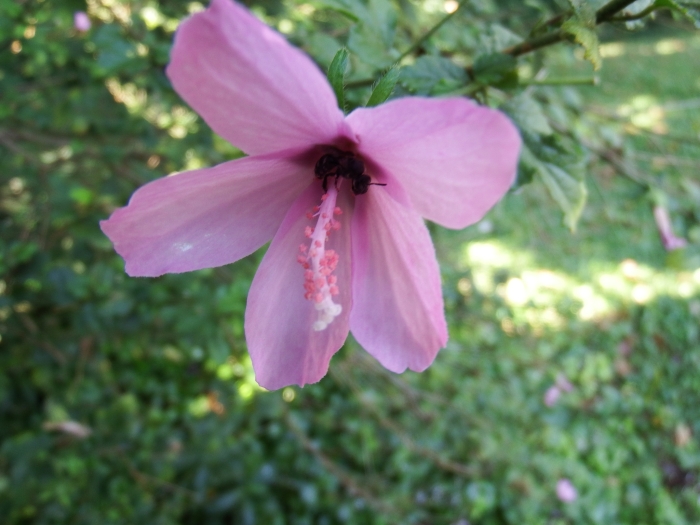Pink Hibiscus
(Hibiscus pedunculatus)
Pink Hibiscus (Hibiscus pedunculatus)
/
/

© Margaret Burger
CC BY-SA 4.0
Image By:
© Margaret Burger
Recorded By:
Copyright:
CC BY-SA 4.0
Copyright Notice:
Photo by: © Margaret Burger | License Type: CC BY-SA 4.0 | License URL: http://creativecommons.org/licenses/by-sa/4.0/ | Uploader: margaretburger | Publisher: iNaturalist |
























Estimated Native Range
Summary
Hibiscus pedunculatus, commonly known as the Pink Hibiscus, is a semi-deciduous shrub native to grasslands, open woodlands, and forest edges in southern Africa. It typically grows to a height of 3-5 feet (0.9-1.5 meters) with a similar spread. The Pink Hibiscus is characterized by its slender, arching branches and small, glossy, dark green leaves. It produces delicate, pale pink flowers with a deep red center throughout the year, peaking in the spring and summer months. The flowers are quite showy and attract pollinators such as butterflies and bees.
The Pink Hibiscus is valued for its extended flowering period and is often used in tropical and subtropical gardens for continuous color. It is relatively easy to maintain, requiring minimal pruning. This plant is suitable for mixed borders, as a specimen plant, or when massed as informal hedging. It prefers well-drained soils, moderate watering, and thrives in full to partial sun. While it is not known for serious pest or disease problems, it can be susceptible to aphids and fungal diseases in humid conditions. It is not typically invasive but should be monitored in optimal growing conditions to ensure it does not spread beyond intended areas.CC BY-SA 4.0
The Pink Hibiscus is valued for its extended flowering period and is often used in tropical and subtropical gardens for continuous color. It is relatively easy to maintain, requiring minimal pruning. This plant is suitable for mixed borders, as a specimen plant, or when massed as informal hedging. It prefers well-drained soils, moderate watering, and thrives in full to partial sun. While it is not known for serious pest or disease problems, it can be susceptible to aphids and fungal diseases in humid conditions. It is not typically invasive but should be monitored in optimal growing conditions to ensure it does not spread beyond intended areas.CC BY-SA 4.0
Plant Description
- Plant Type: Herb, Shrub
- Height: 1-2 feet
- Width: 1-2 feet
- Growth Rate: Moderate
- Flower Color: Pink
- Flowering Season: Summer
- Leaf Retention: Deciduous
Growth Requirements
- Sun: Full Sun, Part Shade
- Water: Medium
- Drainage: Medium
Common Uses
Border Plant, Butterfly Garden, Low Maintenance, Potted Plant
Natural Habitat
Grasslands, open woodlands, and forest edges in southern Africa
Other Names
Common Names: Wild Hibiscus, Forest Hibiscus
Scientific Names: , Hibiscus pedunculatus, Hibiscus kraussianus, Hibiscus kraussianus,
GBIF Accepted Name: